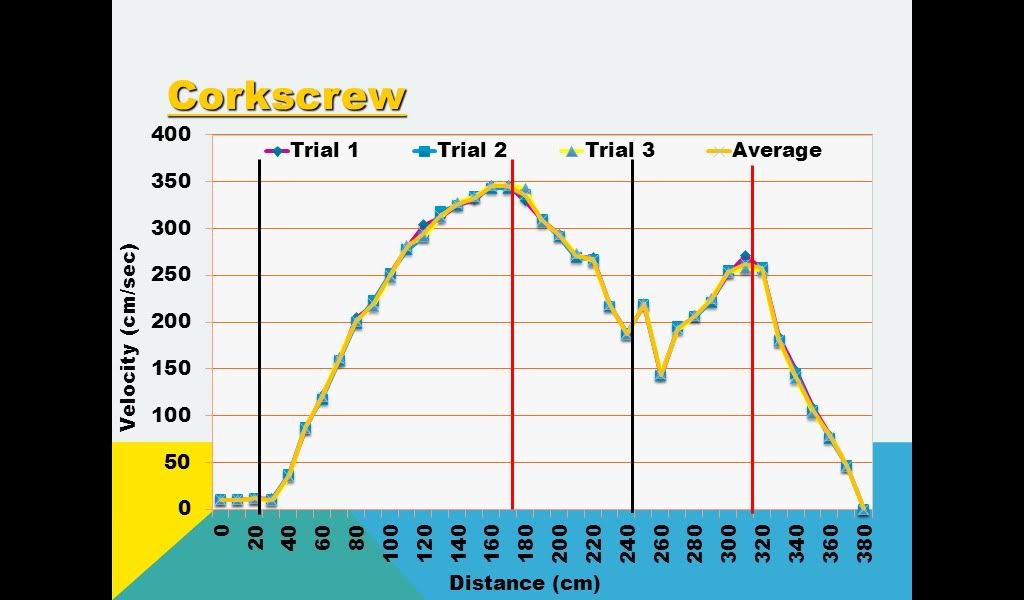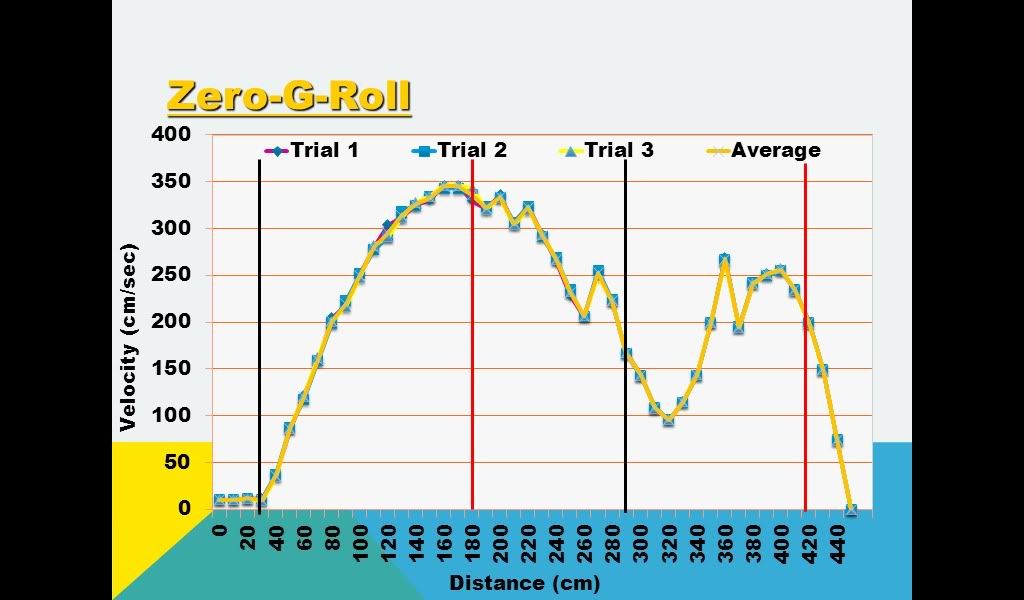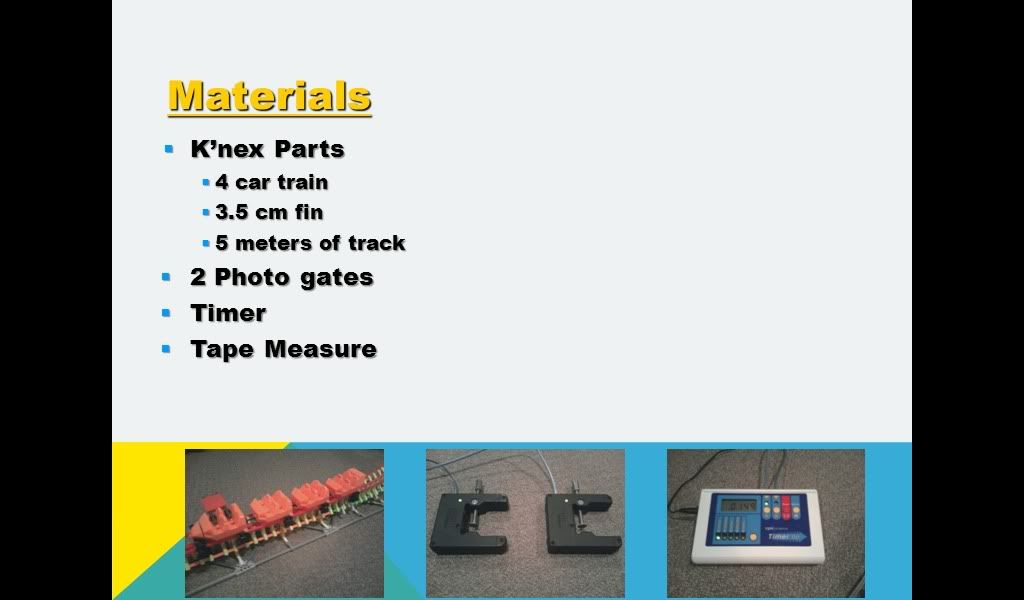Here are my inversions with their technical name and a number. The number relates to the popularity / how common it is to find on a roller coaster.
Inversion #1 - Clothoid Loop
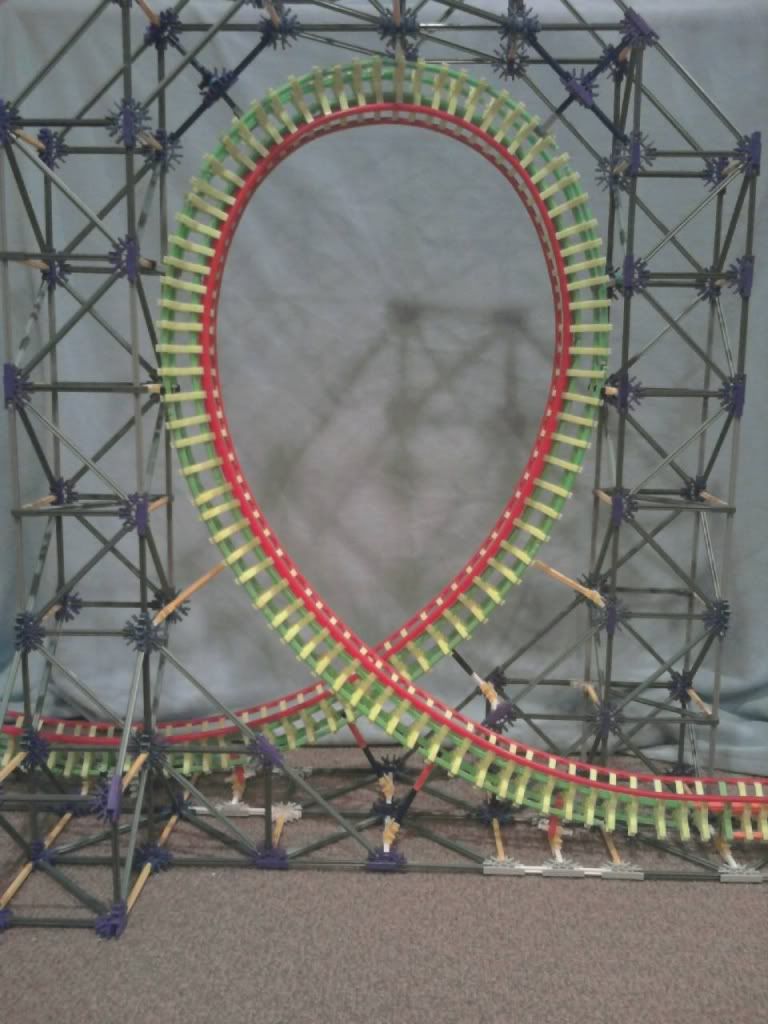
Inversion #2 - Corkscrew
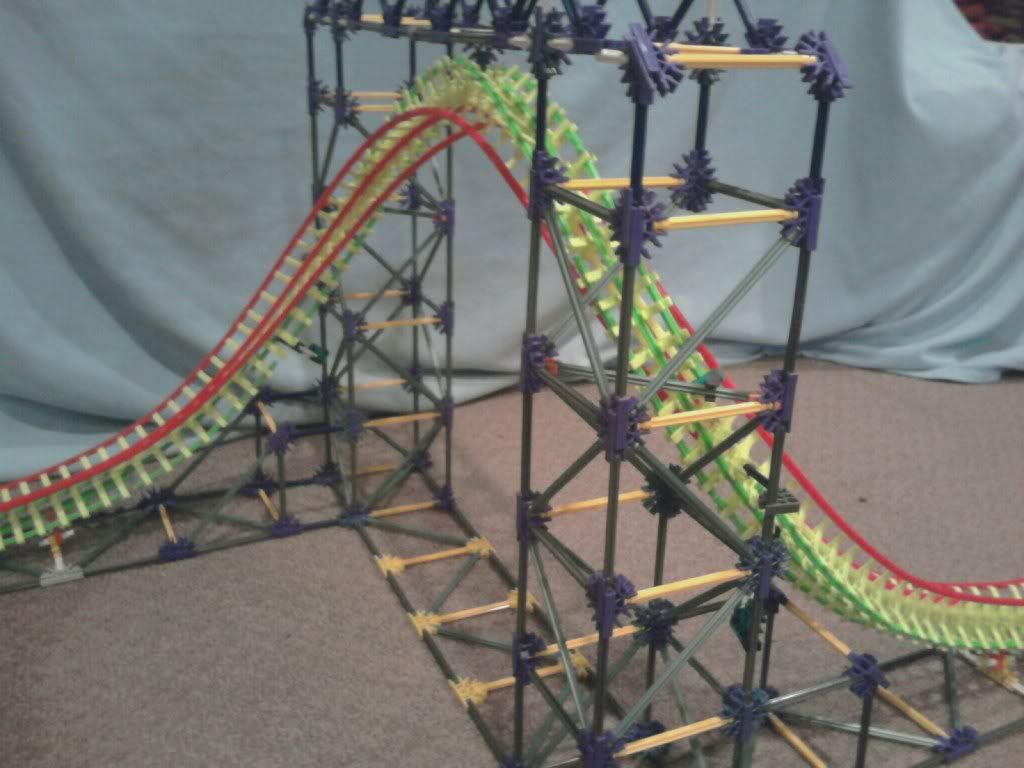
Inversion #3 - Zero-G-Roll

Inversion #4 - Immelmann
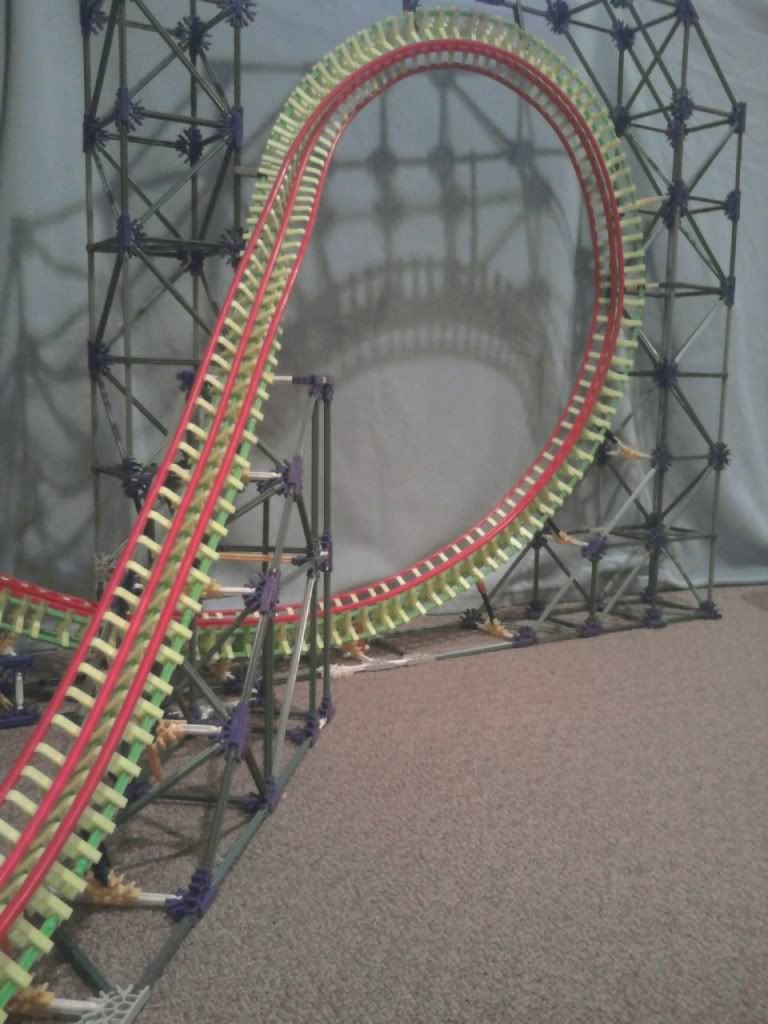
Again, not perfect, but my judges won't have any clue that there's anything wrong. They'll probably think, "oh wow, impressive." I spent so much time working on this, I'm happy to be done.
Results: In order of smallest difference to bigger difference in velocity for my inversions tested above, these are my results from the start of the inversion to the end of the inversion. Each inversion started with the same starting velocity of 345.40 cm/seconds).
- Immelmann - 52.018 cm/seconds
- Clothoid Loop - 54.36 cm/seconds
- Corkscrew - 87.40 cm/seconds
- Zero-G-Roll - 89.30 cm/seconds
However, I am still working on the Potential Energy and the Kinetic Energy of the Car at the top of the lift hill, bottom of the drop (start of inversion), the point of inverting, and the end of the inversion (start of brake run). I will edit these numbers below and they will be used to help finalize my results.
Maybe this will be able to help some of you figure out which type of inversions help maintain velocity for designing a layout. With the inversions tested, I found out inversions with little lateral (side to side) movement maintain a higher velocity. Other inversions create higher difference, resulting in a shorter layout. May seem like common sense, but science has helped to validate this point.








